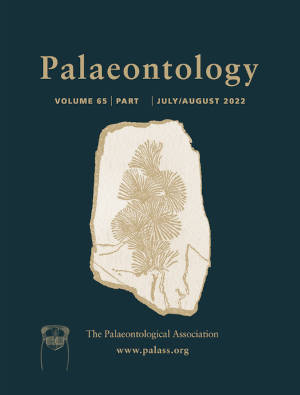Article: Diversity dynamics of microfossils from the Cretaceous to the Neogene show mixed responses to events
Publication: Palaeontology
Volume:
65
Part:
4
Publication Date:
2022
Article number:
e12615
Author(s):
Katie M. Jamson, Benjamin C. Moon, and Andrew J. Fraass
Abstract
Abstract Microfossils have a ubiquitous and well-studied fossil record with temporally and spatially fluctuating diversity, but how this arises and how major events affect speciation and extinction is uncertain. We present one of the first applications of PyRate to a micropalaeontological global occurrence dataset, reconstructing diversification rates within a Bayesian framework from the Mesozoic to the Neogene in four microfossil groups: planktic foraminiferans, calcareous nannofossils, radiolarians and diatoms. Calcareous and siliceous groups demonstrate opposed but inconsistent responses in diversification. Radiolarian origination increases from c. 104 Ma, maintaining high rates into the Cenozoic. Calcareous microfossil diversification rates significantly declines across the Cretaceous–Palaeogene boundary, while rates in siliceous microfossil groups remain stable until the Paleocene–Eocene transition. Diversification rates in the Cenozoic are largely stable in calcareous groups, whereas the Palaeogene is a turbulent time for diatoms. Diversification fluctuations are driven by climate change and fluctuations in sea surface temperatures, leading to different responses in the groups generating calcareous or siliceous microfossils. Extinctions are apparently induced by changes in anoxia, acidification and stratification; speciation tends to be associated with upwelling, productivity and ocean circulation. These results invite further micropalaeontological quantitative analysis and study of the effects of major transitions in the fossil record. Despite extensive occurrence data, regional diversification events were not recovered; neither were some global events. These unexpected results show the need to consider multiple spatiotemporal levels of diversity and diversification analyses and imply that occurrence datasets of different clades may be more appropriate for testing some hypotheses than others.
